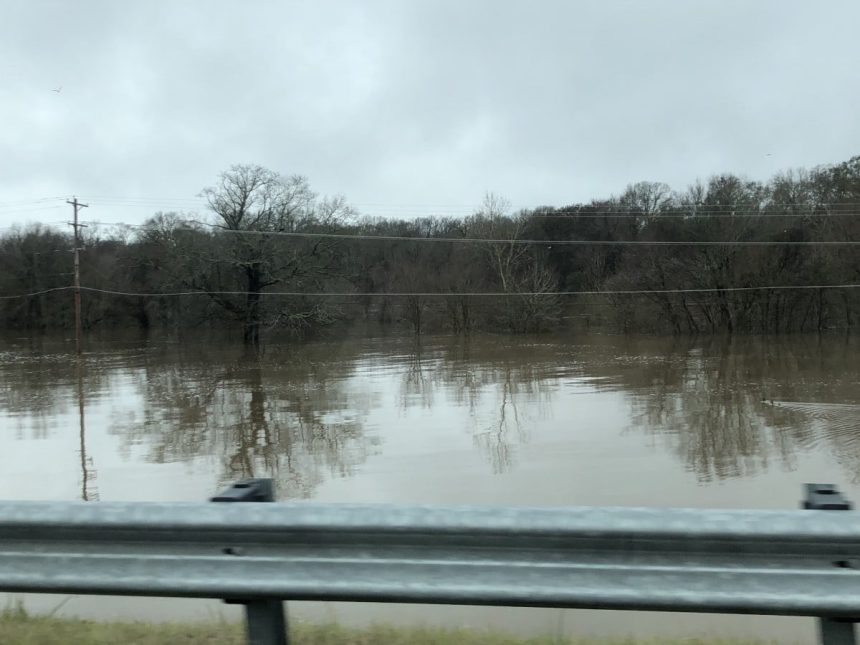Amid flooding concerns in the metro area, the Mississippi State Department of Health has issued a warning.
Health officials warn that flooding can contaminate the public water supply, and drinking contaminated water or using it to cook or clean may cause illnesses.

On its website, the MSDH lists plenty of tips on how to stay safe during a flood when it comes to water quality.
Water for Drinking and Cooking
Safe drinking water includes bottled, boiled, or treated water. Your state health department can make specific recommendations for boiling or treating drinking water in your area. Here are some general rules concerning water for drinking and cooking:
- Do not use contaminated water to wash dishes, brush your teeth, wash and prepare food, or make ice.
- If you use bottled water, know where it came from. Otherwise, water should be boiled or treated before use. Drink only bottled, boiled, or treated water until your supply is tested and found safe.
- Boiling water kills harmful bacteria and parasites; bringing water to a rolling boil for 1 minute will kill most organisms.
- When boiling is not possible, water may also be treated with chlorine or iodine tablets, or by mixing six drops (1/8 teaspoon) of unscented, ordinary household chlorine bleach (5.25% sodium hypochlorite) per gallon of water. If the water is cloudy, use twelve drops (1/4 teaspoon). Mix the solution thoroughly, and let stand for about 30 minutes. These treatments will not kill parasitic organisms, however.
- Containers for water should be rinsed with a bleach solution before re-using them. Use water storage tanks and other types of containers with caution. For example, fire truck storage tanks, as well as previously used cans or bottles can be contaminated with microbes or chemicals.
- Do not rely on untested devices for decontaminating water.
Food Safety
- Do not eat any food that may have come into contact with contaminated floodwater.
- Discard any food not in a waterproof container if there is any chance that it has come into contact with contaminated floodwater.
- Undamaged, commercially canned foods can be saved if you remove the can labels, thoroughly wash the cans, and then disinfect them with a solution consisting of one cup of bleach in five gallons of water. Re-label your cans, including expiration date, with a marker.
- Food containers with screw-caps, snap-lids, crimped caps (soda pop bottles), twist caps, flip tops, snap-open, and home canned foods should be discarded if they have come into contact with flood water because they cannot be disinfected.
- For infants who are not breastfeeding, use only canned baby formula. Do not use powdered formulas unless they are mixed with boiled and cooled water, or water known to be safe.
Sanitation
It is critical to practice basic hygiene during the emergency period. Always wash your hands with soap and water that has been boiled or disinfected:
- Before preparing or eating food
- After toilet use
- After participating in cleanup activities
- After handling articles contaminated with floodwater or sewage
Floodwater may contain fecal material from overflowing sewage systems and agricultural and industrial waste. Although skin contact with floodwater does not, by itself, pose a serious health risk, there is risk of disease from eating or drinking anything contaminated with floodwater. If you have any open cuts or sores that will be exposed to floodwater, keep them as clean as possible by washing them with soap and applying an antibiotic ointment to discourage infection. If a wound develops redness, swelling, or drainage, seek immediate medical attention.
Do not allow children to play in floodwater areas. Wash children’s hands frequently (always before meals), and do not allow children to play with floodwater-contaminated toys that have not been disinfected. You can disinfect toys using a solution of one cup of bleach in five gallons of water.
For much more information, click here.
The Pearl River in Jackson is expected the crest at 38 feet on Saturday, causing flooding concerns in the northeast and southwest portions of the capital city.
Related: MEMA: Pearl River Flood Emergency
Here’s a closer look of the flood map generated with information from the @NWSJacksonMS and Crisis Track pic.twitter.com/BjaatGymqF
— MSEMA (@MSEMA) February 13, 2020
Make sure to stay alert for notices issued by state or local officials when it comes to water in your area.







